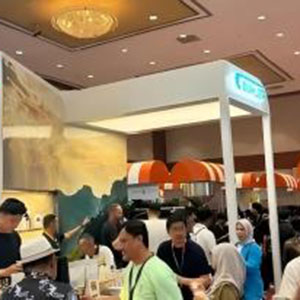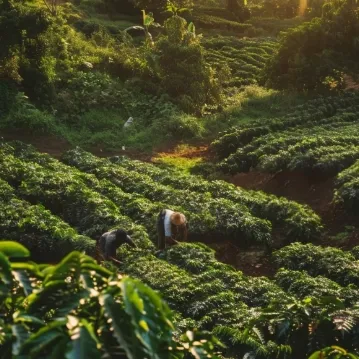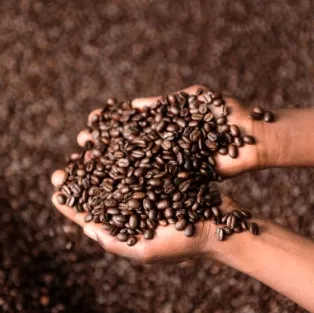
Consumers today care about a range of issues, depending on their demographics, location, and personal values. What is the major concern among global consumers?A 2020 McKinsey survey revealed that over 60% of respondents are willing to pay more for products with sustainable packaging. Besides,Trivium Packaging concluded 82% of consumers showed a willingness to pay more for sustainable packaging. Market Research Report concluded that the value of the global sustainable packaging market was $319.62 billion in 2023 and forecast to reach $491.75 billion in next 5 years.
Towards Packaging, a professional consulting firm in the packaging industry, pointed out that the packaging industry is experiencing a strong shift toward sustainability, driven by a growing emphasis on eco-friendliness, recyclable materials, and sustainable packaging techniques. There is an increasing adoption of plant-based plastics, paper, and other biodegradable materials that decompose naturally. Additionally, the demand for easily recyclable or reusable packaging is rising, helping to minimize waste and reduce environmental impact.
Today, let us spend brief time on figuring out what Sustainability in the Packaging market represents, what are applicable eco-friendly packaging materials and checking out whether we could learn from successful examples.
Sustainability Definition
The UCLA Sustainability Committee defines “Sustainability” as the integration of environmental health, social equity and economic vitality in order to create thriving, healthy, diverse and resilient communities for this generation and generations to come. But what does Sustainable Packing mean? The SPC, Sustainable Packaging Coalition, declared that the sustainable packaging is an approach rather than the packaging materials or formats solely-it’s an approach that integrates environmental responsibility at every stage of packaging design, production, and distribution.
To achieve truly sustainable packaging, SPC outlines five key principles that designers and engineers would apply around the design, manufacture, and distribution of packaged foods. Let take a closer look at these principles: Initially, adopting SMART design to minimize environmental impact while maintaining functionality. Secondly, SPC encourages businesses to use recycled,renewable, and sustainably sourced raw materials like s sustainably-sourced wood , non-wood fiber, or biobased plastics. Meanwhile, eco-friendly packaging should inherent the characatertistics of reusability, recyclability, and compostability also label the end-of-life use instructions for consumers. The fourth standard insists the importance of packaged food producers joining reuse and refill activities for extending the lifespan of packaging materials. Finally, SPC emphasizes on educating consumers engagement through investing recycling programs or infrastructures.
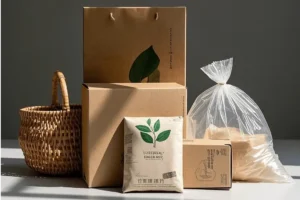
Sustainable Packaging Market Overview
With the main consumption power shift toward Millennials and Generation Z, there consumption preferences reshape corporations’ business strategies and the whole consumer goods market. They grew up with the concerns of circular economy and care about sustainability development. Indeed, 90% of Generation Z shows the willingness of paying more for sustainable packaging products.
Sustainable Packaging By materials
- Paper and Paperboard are made from trees and able to recycle for future packaging use. As well as forests well-managed, the sources of paper and paperboard are sustainable. In America, the recycling rate of paper and paperboard, 68.2%, was the highest among other municipal solid waste ingredients.⑴ Currently, there are more alternative paper-based packaging materials emerged on the sustainable packaging market like recycled paper, hemp paper, and sugarcane paper.⑵
- Glass is a permanent and 100% recyclable packaging choice, which also could be reused and refill many times as long as process appropriately. Glass containers are usually sourced from sand, soda ash, limestone and cullet, all natural raw materials.
- The main metal in the sustainable packaging market are steel and aluminum. A metal beverage can could be reused and sold in groceries within 2 months.⑶ In Europe and North America, around 79% and 77% metal beverage cans were recycled. Distinctly, 85% of used beverage cans were collected in the South America. Since the durability and rigidity of sustainable metal stands out, its sustainability performs better than paper and paperboard based on the recycling data.
- Certain Plastic: Plastic is the widely adopted materials in packaging industries whether food, cosmetics, furnitures, toys and electronic products due its flexibility, water-proof, and cost efficiency. By the end of 2025, the global plastic waste production would peak 460 million tonnes which 40% waste are not recycled. Plastic could be categorized as PET, HDPE, LDPE and PP. HDPE is more durable and recyclable than others. Recently, Bio-plastics are promoted to replace traditional plastics.
Sustainable Packaging By Process
| Prons | Examples | |
| Recyclable Packaging Materials | Low cost, easily reuse | Polyethylene
Glass Aluminum Polystyrene foam |
| Compostable Packaging Materials | Fully decomposes, reduces landfill waste | Sugar Cane
Corn Starch Potato Starch Wood Pulp |
| Biodegradable Packaging Materials | Decompose naturally | Mushroom Packaging
Seaweed Packaging Bio-plastics Fiber made from Hemp Palm leaves Pineapple Leaves. |
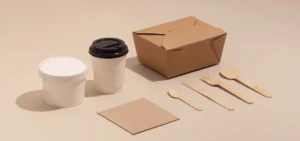
Sustainable Packaging Applications & Solutions
Since global consumers’ awareness on eco-friendly development and sustainable packaging continuously rises, most industries are working on upgrading their packaging formats to meet current demand as well as contribute to green economy. Learn More
Sustainability applied in food market
The global sustainable food packaging market is one of the fastest growing segments, propelled by consumer expectations for environmentally conscious alternatives and regulatory action taken to stop plastic waste across the world. The whole eco-friendly food packaging market Projected to reach $249.5 billion by 2030, increasing use of compostable packaging and plant-based alternatives will continue to transform this market trend. Nestlé and PepsiCo are exploring biodegradable wrappers, edible packaging and recyclable beverage cartons in response to the demand for reduced plastic waste.
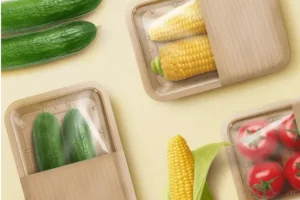
Sustainable Cosmetics and Pharmaceutical Packaging
The east eco-friendly cosmetic packaging market has been growing due to increased awareness of plastic contamination in cosmetics and the consumer shift toward green products. With a CAGR of 6.3% forecast by 2030, there is a positive movement toward including refillable containers, aluminum tins and glass jars. L’Oréal and Unilever are maximizing the trend of reducing waste by creating more reusable skincare packaging and introducing paper-based deodorant sticks.
Sustainable packaging in pharmaceuticals has the potential to continue increasing in popularity as regulations influence environmental responsibility in pharmaceutical packaging. The market is projected to reach $142 billion by 2028, while pharmaceutical companies are innovating with sustainable packaging options such as recyclable PET blister packaging and biodegradable pill bottles. Pfizer and Johnson & Johnson are developing paper-based medicine pouches, digital prescription labels and other measures to create lower waste opportunities.
E-commerce Sustainability
As e-commerce has exploded, we have seen stronger packaging waste than ever, moving retailers towards more sustainable options.The sustainable e-commerce packaging market is projected to reach $98 billion by 2030, as consumer expectations, policies and regulations will continue to dictate a transformation to greener options. Amazon and Shopify have made strides to reduce plastics in their product packaging by utilizing recyclable mailers, cardboard shipping boxes and compostable fillers.
Sustainable Packaging Market Trends
Government Regulations: Governments around the globe are reinforcing regulations to promote sustainable practices like plastic bans and mandatory recycling requirements. The European Union’s Single-Use Plastics Directive and North American extended producer responsibility (EPR) requirements are pushing businesses to transition to sustainable packaging alternatives.
- Emerging Materials: Companies are developing alternatives substrates, such as mycelium-based packaging, bioplastics made from algae, and films made from cellulose, that are compostable and less carbon intensive.
- Circular Economy Initiatives: An increasing number of businesses commit to closed-loop systems of reuse and recycling of packaging. Some well-known corporations provide take-back programs and refill stations to extend the life of the packaging.
- Consumer Demand for Transparency: Brands are improving product packaging to include labeling that provide transparency around recyclability and sustainability claims. Governments have also stepped in to require clearer environmental labeling standards to address greenwashing.
- Corporate Sustainability Commitments: Large corporations, such as Unilver and Coca-Cola, announced commitments to 100% recyclable packaging by 2030. Companies are also using AI-driven supply chain optimization to improve material waste and carbon emissions.
- Smart Packaging Technologies: Businesses are developing smart packaging that feature QR codes and/or NFC tags to provide the consumer with sustainable information, disposal instructions, and traceability information to improve recycling rates.
Summary
Sustainable packaging is not a trend, it is a future of the packaging sector. As consumers become more familiar with sustainability and regulations tighten, companies that adopt sustainable packaging solutions will set themselves apart as competition becomes fiercer. Since goods packaging represents a large part of the environmental footprint in the economy, using recyclable packaging, new and interesting designs, and initiatives related to the circular economy (to engage customers) can create a good balance between lowering environmental footprint and responding to market demand. In an evolving industry, businesses will need to innovate continuously and adopt sustainability-oriented strategies that align with the market’s consumer expectations and the sustainability expectations from the globe.
About SANEU
At SANEU, we support businesses in your quest for sustainable packaging options with our high-tech packaging machines and sustainable packaging material solutions, which we provide for the food, coffee, and cosmetics industries. Our high-tech packaging machines are designed specifically for different product types to be packaged effectively, reliably, and eco-friendly. For example, our coffee capsule filling machines provide you with the flexibility to package ground coffee into different sizes and/or forms with eco-friendly capsules. Implementing our solutions will allow your company to deliver fresh products, reduce your environmental footprint and meet the growing demand from consumers for sustainability initiatives.
Frequently Asked Questions About Sustainable Packaging
Q1: What eco-friendly packaging materials do you offer for coffee products?
We have Biodegradable and Recyclable packaging materials invented for coffee products, made from Sugarcane,Corn Starch, Aluminium and so on. As for formats, we provide packaging solutions for both single-served coffee and bulk size.
Q2:Do you offer sustainable coffee capsules packaging?
Of Course, We have eco-friendly k-cup and Nespresso capsules samples. As for other types of coffee capsules, we could customize based on your requirements.
Q3: How do your packaging machines support sustainability?
The machines we offer are structurally sound to maximize the lifespan, decreasing replacements and waste. Our solutions work well with reusable compostable packaging materials to help achieve sustainability objectives. Besides, Our equipment is engineered for reliability to maximize performance where energy expenditure is minimum, leaving a lighter carbon footprint.
Q4: Can your packaging solutions maintain the freshness of coffee products?
We try the best to balance eco-friendly packaging and freshness in the maximum with our exclusive techniques.
Q5: How do you ensure the quality and safety of your sustainable packaging materials?
We adhere to stringent quality control measures and industry standards to ensure that our sustainable packaging materials are safe for food contact and meet all regulatory requirements.
Q6: What support do you provide during the transition to sustainable packaging?
- Consultation Services: Assessing your current packaging processes and recommending sustainable alternatives.
- Customization: Designing exclusive machinery and packaging materials based on evaluation.
- Staff Training: Educating your team on operating new machinery and handling eco-friendly materials.
- Technical Support:Providing ongoing assistance to ensure seamless integration of our packaging solutions into your operations.
Q7: Are your sustainable packaging solutions cost-effective?
While the initial investment may vary, our sustainable packaging solutions are designed to be cost-effective in the long run by reducing material waste, enhancing operational efficiency, meeting the growing consumer demand for eco-friendly products, and complying with legal requirements.
Q8: How can I get started with implementing sustainable packaging in my business?
You can start by contacting our team for a personalized consultation. We’ll assess your current packaging needs and develop a tailored plan to transition to sustainable solutions that align with your business objectives.By partnering with us, you take a significant step towards environmental responsibility while maintaining the quality and appeal of your products.

